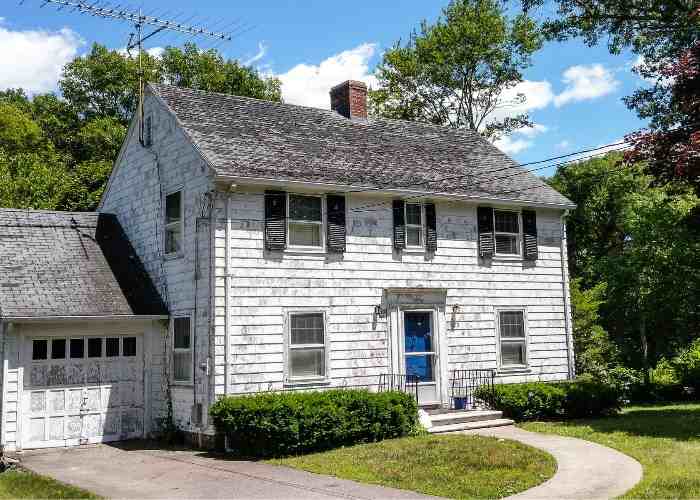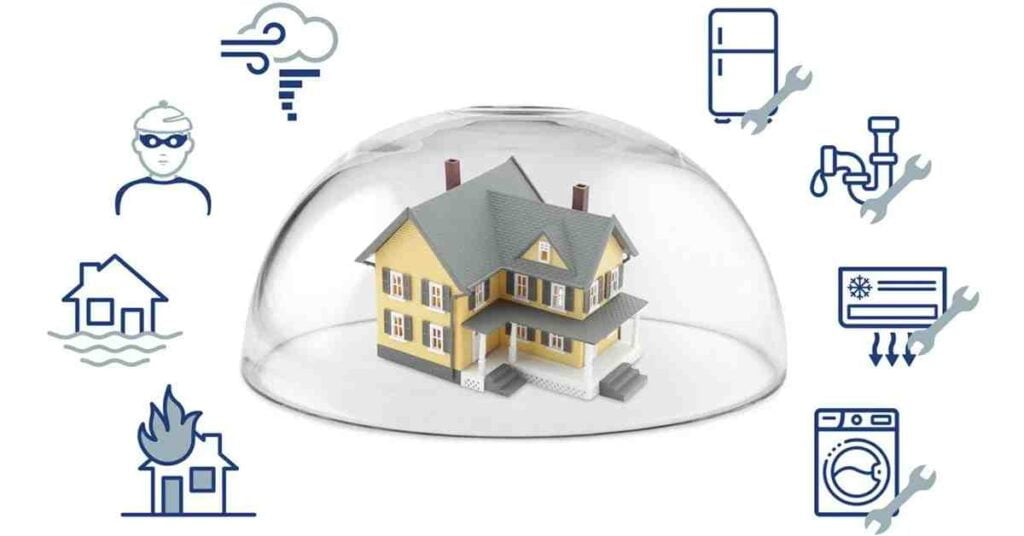Insuring older homes can be quite an adventure. These houses, with their rich histories and unique charm, often bring a sense of nostalgia and beauty that’s hard to find in modern constructions. However, their age and character can also make home insurance a bit more complicated and expensive.
In this article, we’ll explore what it means to insure an older home and why the premiums might be higher. We’ll look at how old construction techniques and changing building codes can affect insurance costs. By understanding these factors, we can better appreciate the reasons behind the insurance rates for these beloved homes.
So, whether you’re a proud owner of a vintage Victorian or a mid-century modern masterpiece, read on. This could potentially save you a considerable amount on your next insurance premium.
Risk Factors

The age of a home can significantly impact the risks associated with its structure and systems, often leading to higher insurance costs. Here’s how:
- Outdated Construction Materials and Methods: Older homes often have materials and construction techniques that wouldn’t pass today’s safety standards. For example, asbestos was commonly used for insulation and lead-based paint was standard, but we now know both are health hazards. The framing might also use methods like balloon framing, which aren’t as sturdy or fire-resistant as modern techniques.
- Structural Risks: Over time, materials can deteriorate. Wood can rot, metal can rust, and mortar can crumble, compromising the structural integrity of the house. These issues are not just cosmetic; they can lead to serious damage if not addressed.
- Outdated Systems: The major systems in older homes, such as HVAC, roofing, plumbing, and electrical wiring, may be outdated. For example, knob-and-tube wiring, common in homes built before 1950, poses a fire risk and is often a red flag for insurers.
- Remodeling and Repairs: Older homes may have undergone remodeling or repairs that were not up to current standards, leading to hidden defects. Inadequate reinforcements and improper repairs can pose significant risks.
- Building Codes and Regulations: Many older homes do not comply with current building codes. While this doesn’t necessarily mean they are unsafe, it does mean they might require costly updates to meet insurance company standards.
- Increased Likelihood of Damage: Due to all the factors mentioned above, older homes are generally at a higher risk of damage from events like fires, water damage, and structural failures. This increased risk translates directly into higher insurance premiums as insurers cover the greater potential for claims.
- Roofing Concerns: Older homes may have roofing that is more susceptible to damage from weather and time. Insurers often scrutinize the condition of the roof when determining premiums, as a compromised roof can lead to significant water damage.
- Energy Efficiency: Older homes are often less energy-efficient, which can indirectly affect insurance costs due to the increased risk of problems like frozen pipes or mold from poor insulation.
Insurance companies assess these risks when determining premiums, and as a result, owners of older homes often face higher costs to insure their properties. Homeowners need to be aware of these issues and address them proactively to ensure their homes are safe and to potentially reduce their insurance costs.
Coverage Options
When it comes to insuring older homes, there are several types of policies that homeowners can consider:
- Standard Homeowners Insurance: Depending on the age and condition of the home, a standard homeowners insurance policy may suffice. This typically covers the dwelling, personal property, liability, and additional living expenses.
- HO-8 Policy: Specifically designed for older homes, an HO-8 policy, also known as modified coverage insurance, is tailored for homes with materials that are difficult to replace or for homes that have a rebuild cost higher than their market value.
- High-Value Home Insurance: For historic homes or those with high rebuild costs, high-value home insurance may be necessary. This type of policy provides coverage that matches the home’s value and often includes additional services.
- Ordinance or Law Coverage: This add-on helps cover the increased costs of bringing your home up to code after a covered loss. It’s particularly useful for older homes that may not meet current building standards.
- Building Code Coverage: Similar to ordinance or law coverage, building code coverage pays for the costs associated with updating your home to meet current building codes after a loss.
- Service Line Coverage: This coverage option pays for damage to utility lines that the homeowner is responsible for, which can be a concern for older homes with aging infrastructure.
- Flood Insurance: Older homes may not have been built with modern flood prevention in mind, making separate flood insurance a wise choice for comprehensive protection.
- Extended Replacement Cost Coverage: This extends your coverage beyond the dwelling limit, which can be beneficial if the cost to rebuild your home exceeds the policy limit due to unexpected increases in construction costs.
Each of these policies and coverage options can be tailored to the specific needs of an older home, providing homeowners with peace of mind and protection against the unique risks they face.
Insurance Costs

When discussing insurance costs for older homes, it’s important to consider that these costs can vary widely based on several factors, including the home’s location, construction materials, and age. Here’s a summary of the data on average insurance premiums for homes of various ages:
- New Construction: The average annual premium for a newly constructed home is approximately $966.
- 10 Years Old: Homes that are 10 years old see an average annual premium of $1,478, which is a 53% increase compared to new construction.
- 20 Years Old: The average premium for a 20-year-old home is about $1,670, marking a 13% increase from a 10-year-old home.
- 30 Years Old: For homes that are 30 years old, the average insurance rate is $1,694 annually, a slight 1% increase from 20-year-old homes.
- 40 Years Old: The average annual premium for a 40-year-old home is $1,698, showing a marginal rise of 0.23% from 30-year-old homes.
- 50 Years Old: Homes that are half a century old continue to see minimal increments in insurance premiums, with the average annual cost being $1,700.
- 75 Years Old: The average premium for 75-year-old homes is around $1,719 per year.
- 100-Year-Old Homes: The average cost of homeowners insurance for a home that’s 100 years old is $1,956 per year — which is nearly $850 more expensive than the average cost for a new home.
These figures illustrate that, generally, the older the home, the higher the insurance premium, due to the increased risk associated with older homes. However, it’s crucial to note that these are average figures and actual premiums can vary greatly depending on specific circumstances.
Discounts and Savings
When it comes to home insurance for older homes, there are several discounts and savings opportunities that homeowners can take advantage of to reduce their premiums:
- Renovation Discounts: If you’ve recently updated critical systems like plumbing, electrical, or heating, you may qualify for a discount. These updates reduce the risk of system failures and potential claims.
- Claims-Free Discount: Homeowners who have not filed a claim for a certain number of years can be eligible for a claims-free discount, which can save up to 20 percent on premiums.
- Loyalty Discount: Long-term customers may receive a loyalty discount from their insurer, rewarding them for their continued business.
- Home Security Systems: Installing security systems, smoke detectors, deadbolts, or other safety features can lead to discounts, as they lower the risk of theft and damage.
- Age of Home Discount: Newer homes may receive a larger discount, but some insurers offer a premium reduction based on the age of the home, with the discount decreasing as the home gets older.
- Bundling Policies: Combining your home insurance with auto or other types of insurance from the same company can result in significant savings.
- Gated-Community Credit: Living in a gated community or a secure location could cut up to 20 percent off the cost of home insurance due to reduced risk of theft and vandalism.
- Senior Discounts: Some insurance companies offer discounts to senior citizens, recognizing that they may be more diligent in maintaining their homes and present a lower risk profile.
- Risk Mitigation Measures: Taking steps to mitigate risks, such as installing storm shutters or reinforcing the roof, can also lead to discounts.
- Professional Affiliations: Members of certain professional organizations or alumni associations may be eligible for group discounts through affiliated insurance providers.
- Non-Smoker Discount: Some insurers offer discounts to non-smoking households, as this reduces the risk of fire inside the home.
- Retiree Discounts: Being age 55 or older and retired can sometimes qualify you for a discount, as retirees tend to spend more time at home, which can lead to quicker response times in case of an emergency.
- Green Home Discounts: If your home has environmentally friendly installations or certifications, such as solar panels or LEED certification, you may be eligible for a green home discount.
Do Condos Need Home Insurance?
By exploring these discounts and discussing options with their insurance provider, homeowners can find ways to make their home insurance more affordable without compromising on coverage.
Insurance Company Policies
When reviewing the policies of different insurance companies regarding older homes, it’s evident that coverage options and availability can vary significantly. Here’s a summary of what some insurance companies offer:
- USAA: Known for serving military members and their families, USAA offers ordinance or law coverage, which helps cover the cost of bringing a home up to code after a covered loss. They provide policies for homes that are over 100 years old with competitive rates.
- Allstate: Allstate provides building code coverage to pay for the costs associated with updating a home to meet current codes after a covered loss. They also offer extended replacement cost coverage, which can extend your coverage past your dwelling limit by 25% to 50%.
- Chubb: Chubb is often recognized for its high-value home insurance, which can be particularly beneficial for older homes that may have higher rebuild costs due to unique architectural features.
- Amica: Cited as the cheapest home insurance company for older homes, Amica offers coverage tailored to the needs of older properties, ensuring affordability without compromising on essential protection.
- Liberty Mutual: Liberty Mutual is highlighted for its discounts, which can help homeowners of older homes save on their insurance premiums while still obtaining comprehensive coverage.
- Progressive: Progressive is known for offering the option to bundle insurance policies, which can be advantageous for owners of older homes looking to combine their home insurance with auto or other types of insurance.
- Farmers: Farmers Insurance provides customizable coverage options, allowing homeowners to tailor their policies to the specific needs and risks associated with their older homes.
- State Farm: State Farm is among the insurers that cover older homes and is known for its wide availability and range of coverage options.
- Travelers: Travelers Insurance offers coverage for older homes, with a focus on providing options that cater to the unique aspects of insuring such properties.
Homeowners need to compare these options and consult with insurance agents to find the best policy for their older home. Factors such as the home’s condition, location, and historical value will play a significant role in determining the most suitable and cost-effective insurance coverage.
FAQs
Q 1. What is an HO-8 policy, and when is it necessary for older homes?
Ans. An HO-8 policy, also known as a modified coverage form, is designed for owner-occupied homes that may not meet the current market value due to their age, architectural significance, or use of hard-to-find materials. It’s necessary for homes over 40 years old, registered landmarks, or those made with materials that are difficult to replace.
Q 2. How do insurance companies determine if an older home is insurable?
Ans. Insurance companies assess the insurability of an older home based on factors such as the home’s age, the condition and character of the home, its association with historical events or persons, and the condition of critical systems like electrical and plumbing.
Q 3. What are the most common exclusions in home insurance policies for older homes?
Ans. Common exclusions include damage from earth movement or earthquakes, floods, falling objects, normal wear and tear water damage, intentional direct damage, and war.
Q 4. What steps can homeowners take to ensure their older home meets current building codes?
Ans. Homeowners should consult with local Emergency Management Agencies, building departments, or licensed design professionals to understand local hazards, risks, and suggested improvements to meet current building codes.
Q 5. What kind of documentation is required to prove updates and maintenance for insurance purposes?
Ans. Documentation such as purchase orders, receipts, canceled checks, and any other documentation received during updates and maintenance is required to prove the value and condition of the home for insurance purposes.
Conclusion
In conclusion, while it’s true that older homes can often come with higher insurance premiums, it’s not a hard and fast rule. The cost of home insurance is influenced by a myriad of factors, from the age and condition of the home to the materials used in its construction, and even the updates it has undergone over the years. As a homeowner, it’s crucial to understand these factors and how they impact your insurance costs.
Remember, knowledge is power. The more you know about what drives the cost of your home insurance, the better equipped you’ll be to make informed decisions and potentially save on your premiums. So, whether you own an older home or are considering buying one, don’t let the potential cost of insurance deter you. With the right information and a bit of savvy shopping, you can find a policy that provides the coverage you need at a price you can afford.

Join Shubham, a finance enthusiast with a mission to empower readers with the knowledge and tools to achieve financial freedom. Discover smart financial advice and unlock your financial potential.


